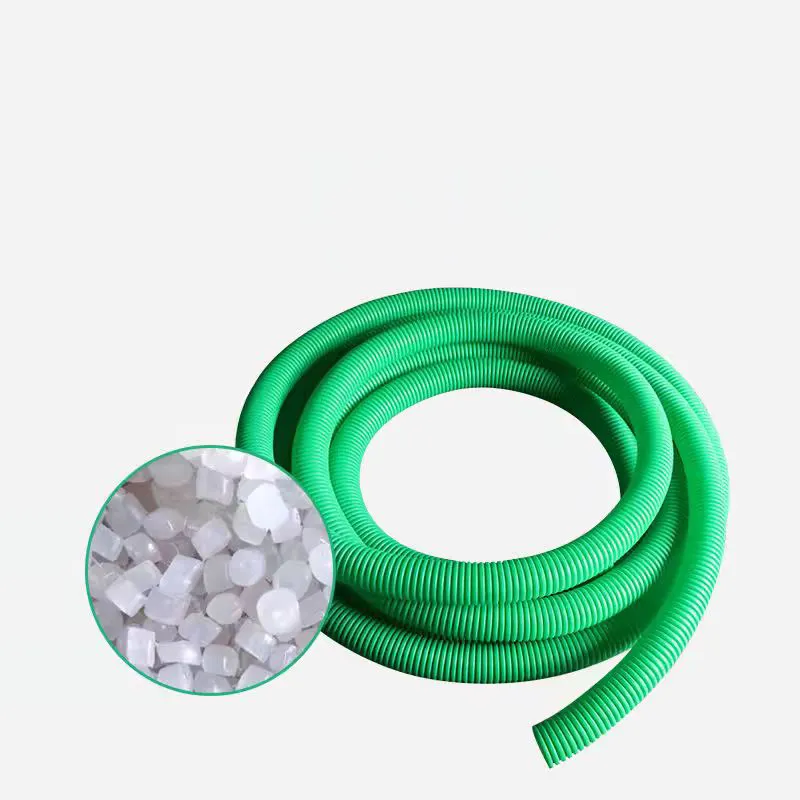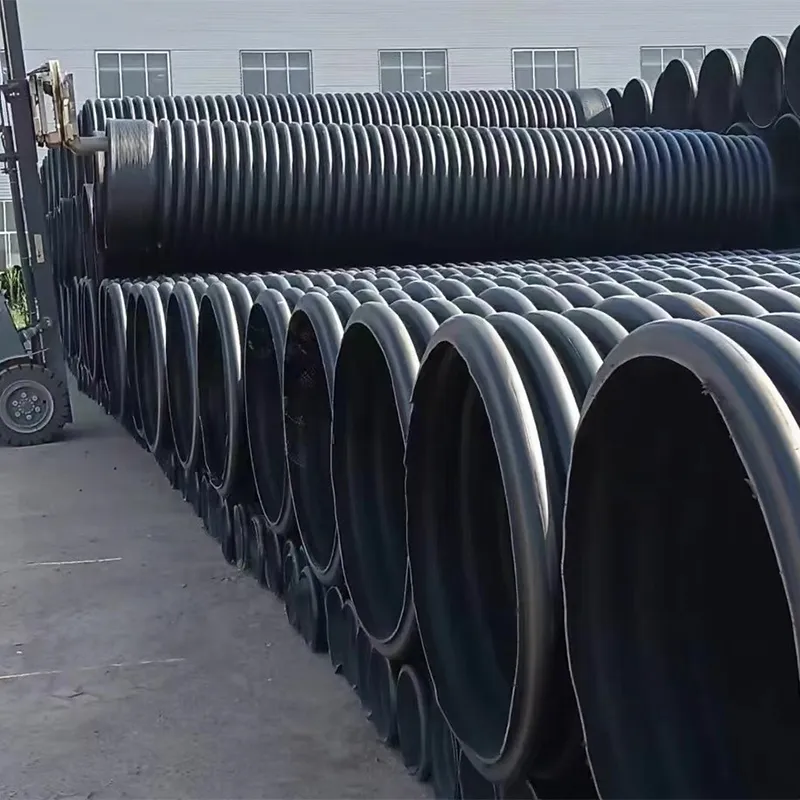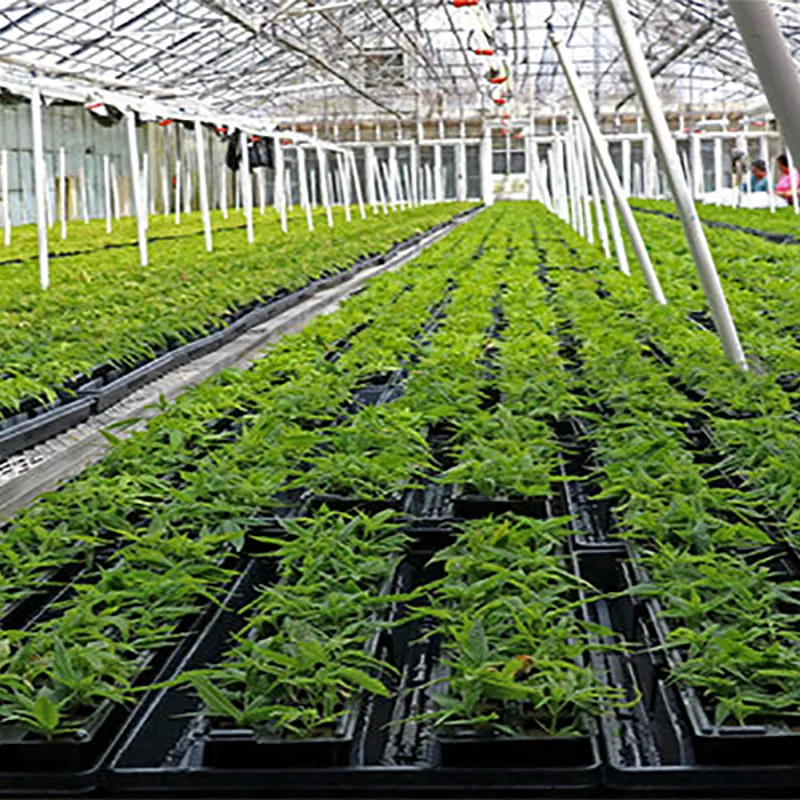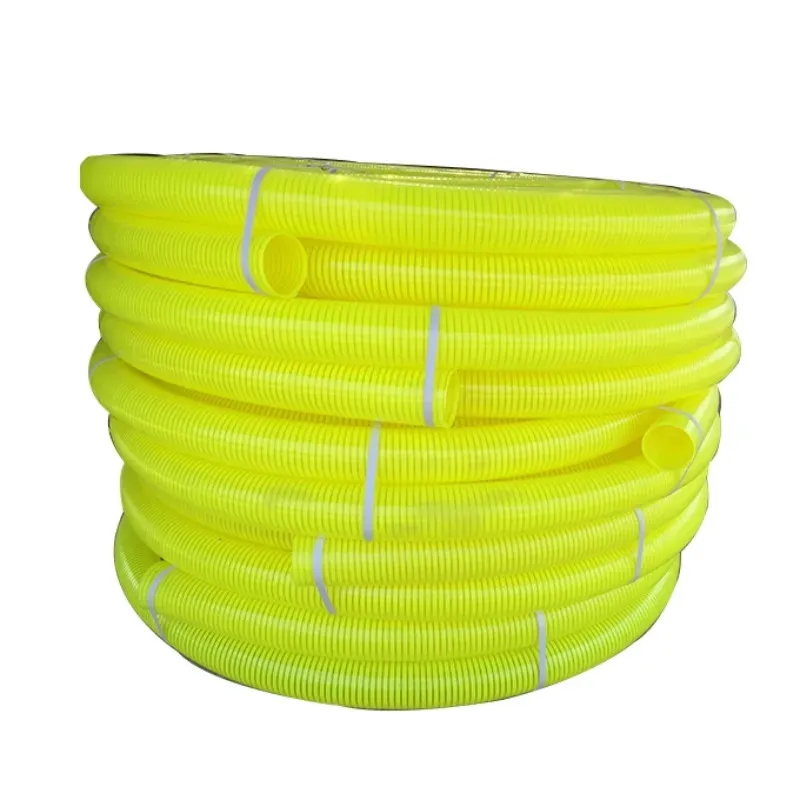Importance
PE (Polyethylene) pipe fittings play a crucial role in geothermal systems, contributing significantly to their efficiency, reliability, and overall success. Here are the key reasons why PE pipe fittings are of utmost importance in geothermal applications:
1. Efficient Heat Transfer
Geothermal systems rely on transferring heat between the Earth's subsurface and the buildings or power generation facilities. PE pipe fittings offer excellent thermal conductivity, enabling efficient heat transfer from the geothermal source to the working fluid circulating through the system. This efficiency ensures that the geothermal system can deliver optimal heating or cooling performance.
2. Corrosion Resistance
Geothermal fluids often contain minerals, dissolved gases, and other chemical substances, which can be corrosive and damaging to conventional metal pipe fittings. PE pipe fittings have a natural resistance to corrosion, ensuring that the system remains structurally sound over the long term and minimizing the risk of leaks or failures.
3. Chemical Resistance
Geothermal systems commonly use an antifreeze solution or other additives in the working fluid to prevent freezing in colder climates. PE pipe fittings are highly resistant to chemicals, ensuring that they maintain their integrity and mechanical properties despite exposure to the geothermal fluid's additives.
4. Flexibility and Toughness
The flexibility and toughness of PE pipe fittings are essential for geothermal applications, especially during installation. The fittings can withstand bending, settling, ground movement, and other stresses, making them less susceptible to damage and reducing the risk of leaks in the system.
5. High Temperature Resistance
Geothermal systems can operate at elevated temperatures, particularly in power generation applications. PE pipe fittings are designed to handle high temperatures without losing their structural integrity, ensuring that they can perform reliably under varying thermal conditions.
6. Low Maintenance and Longevity
The durability and corrosion resistance of PE pipe fittings translate into extended service life with minimal maintenance requirements. This reduces the overall operational costs and increases the system's reliability and longevity, making geothermal systems more economically viable and sustainable.
7. Environmental Friendliness
Geothermal energy is one of the most environmentally friendly energy sources available, and PE pipe fittings contribute to this advantage. As they are made from a recyclable material, using PE pipe fittings in geothermal systems aligns with the principles of sustainability and reduces the carbon footprint associated with the project.
8. Versatility and Adaptability
PE pipe fittings come in a variety of sizes and configurations, allowing for easy customization and adaptation to different geothermal projects, regardless of their scale or complexity. This flexibility simplifies the installation process and makes it easier to tailor the geothermal system to the specific needs of each application.
In conclusion, PE pipe fittings are indispensable components in geothermal systems, as they ensure efficient heat transfer, resist corrosion and chemicals, remain durable under high temperatures, and offer low maintenance requirements. Their presence enhances the overall performance and reliability of geothermal systems, making them an essential enabler of sustainable and renewable geothermal energy utilization. With the increasing focus on environmental protection and the transition to cleaner energy sources, the importance of PE pipe fittings in geothermal applications is likely to continue growing in the future.
Key Properties
PE (Polyethylene) pipe fittings possess several key properties that make them highly desirable for various applications. These properties contribute to their widespread use in industries such as water supply, gas distribution, irrigation, and more. Below are the key properties of PE pipe fittings:
1. Corrosion Resistance
PE pipe fittings are highly resistant to corrosion, making them ideal for use in various environments, including those with chemically aggressive substances or acidic conditions. This property ensures that the fittings maintain their structural integrity over time, reducing the risk of leaks and failures.
2. Chemical Resistance
PE pipe fittings exhibit excellent resistance to a wide range of chemicals, including acids, alkalis, and solvents. This property allows them to be used in applications where they come into contact with different fluids, such as industrial chemical transport or sewage systems.
3. Flexibility
PE pipe fittings are known for their high flexibility, which makes them easier to handle and install. Their ability to bend and flex allows for smoother installation around obstacles and reduces the need for additional joints, minimizing the risk of potential leakage points.
4. Toughness
PE pipe fittings have high toughness, which means they can withstand impact and stress without breaking or cracking. This toughness is especially crucial for underground applications, where the fittings may be subjected to ground movement or external pressure.
5. Low Weight
PE pipe fittings are lightweight compared to traditional metal fittings, making them easier and more cost-effective to transport and install. The low weight also reduces the load on supporting structures, which can be particularly beneficial in large-scale projects.
6. Ease of Installation
The flexibility and lightweight nature of PE pipe fittings contribute to their ease of installation. They can be joined using various methods, including butt fusion, electrofusion, and mechanical connections, simplifying the assembly process and reducing installation time.
7. Longevity
PE pipe fittings have a long service life, especially when installed correctly and under suitable conditions. Their resistance to corrosion, chemicals, and environmental factors ensures they can provide reliable performance for many years, requiring minimal maintenance.
8. Temperature Resistance
PE pipe fittings can withstand a broad range of temperatures, from sub-zero temperatures in cold climates to higher temperatures in hot environments. This property allows them to be used in applications where the fluid or medium being transported experiences varying temperature conditions.
9. Abrasion Resistance
PE pipe fittings have good resistance to abrasion, making them suitable for applications involving the transport of solids or abrasive substances, such as slurry pipelines in mining or dredging operations.
10. Low Friction Coefficient
PE pipe fittings have a low friction coefficient, which reduces energy losses during fluid transport and makes them energy-efficient in pumping applications.
11. Non-Toxic and Safe
PE is a non-toxic material, making PE pipe fittings safe for conveying potable water and food products.
In summary, the key properties of PE pipe fittings, including corrosion and chemical resistance, flexibility, toughness, and ease of installation, make them a versatile choice for various applications across different industries, ensuring cost-effectiveness, durability, and reliability in diverse environmental conditions.
Benefits
PE (Polyethylene) pipe fittings play a significant role in advancing the burgeoning world of renewable energy, contributing to the success and growth of various renewable energy technologies. Here are the benefits that PE pipe fittings bring to the renewable energy sector:
1. Enhanced Efficiency in Geothermal Systems
Geothermal energy, harnessed from the Earth's heat, is a sustainable and reliable source of energy. PE pipe fittings are crucial components in geothermal systems, facilitating efficient heat transfer between the geothermal source and the heat pump. Their excellent thermal conductivity ensures optimal performance, maximizing the system's efficiency in providing heating, cooling, and electricity generation.
2. Reduced Environmental Impact
One of the primary advantages of renewable energy is its minimal environmental impact compared to fossil fuels. PE pipe fittings are made from a recyclable material, and their use in renewable energy projects aligns with the principles of sustainability. Additionally, the properties of PE, such as its resistance to corrosion and chemicals, contribute to the longevity of the fittings, reducing the need for frequent replacements and waste generation.
3. Enhanced Reliability in Solar Water Heating Systems
Solar water heating systems capture sunlight to heat water for various applications. PE pipe fittings are used in these systems to transport the heated water from the solar collectors to the storage tanks or distribution points. Their corrosion resistance and ability to withstand temperature variations ensure that the system operates reliably over the long term, promoting the widespread adoption of solar water heating.
4. Cost-Effectiveness in Biomass Energy
Biomass energy utilizes organic materials, such as agricultural waste and wood pellets, for power generation. PE pipe fittings are employed in biomass fuel supply lines, ensuring the efficient and cost-effective transport of biomass feedstock to power plants. Their low weight and ease of installation reduce labor and transportation costs, making biomass energy more economically viable.
5. Efficient Water Management in Hydropower Systems
Hydropower harnesses the energy of moving water to generate electricity. PE pipe fittings are used for water management in hydropower systems, facilitating the smooth flow of water from the reservoir to the turbines. Their flexibility and resistance to abrasion ensure efficient water conveyance, optimizing the energy generation process.
6. Reliable Cooling in Concentrated Solar Power (CSP) Plants
Concentrated solar power plants use mirrors or lenses to concentrate sunlight onto a receiver to produce high-temperature heat. PE pipe fittings play a crucial role in cooling systems, efficiently transporting the cooling medium, such as water or thermal oil, to dissipate heat and maintain the efficiency of the CSP plant.
7. Versatility in Wind Energy
Wind energy, derived from wind turbines, requires efficient electrical and data cable protection. PE pipe fittings are used as conduits for protecting underground electrical and telecommunication cables, safeguarding them from damage and contributing to the reliable operation of wind farms.
8. Support for Sustainable Development Goals
The use of PE pipe fittings in renewable energy projects aligns with various Sustainable Development Goals (SDGs), including affordable and clean energy, climate action, and sustainable cities and communities. By promoting renewable energy technologies, PE pipe fittings contribute to a more sustainable and resilient future for communities worldwide.
In conclusion, PE pipe fittings bring multiple benefits to the burgeoning world of renewable energy, enhancing the efficiency, reliability, and cost-effectiveness of various renewable energy technologies. As the global focus on renewable energy intensifies, the role of PE pipe fittings will continue to be instrumental in driving the transition to cleaner and more sustainable energy sources.
In conclusion, PE (Polyethylene) pipe fittings play a vital and indispensable role in geothermal systems, providing the necessary infrastructure to harness the Earth's natural heat for heating, cooling, and electricity generation. The key properties of PE pipe fittings, including thermal conductivity, corrosion resistance, chemical resistance, flexibility, and toughness, make them ideally suited for geothermal applications. Their outstanding performance in efficiently transferring heat, ensuring structural integrity, and requiring minimal maintenance contribute to the success and widespread adoption of geothermal energy as a sustainable and environmentally friendly power source. As we continue to embrace renewable energy solutions, PE pipe fittings remain at the forefront, paving the way towards a greener and more sustainable future.
FAQ
Q1: How many kinds of PE pipe fittings?
There are various kinds of PE (Polyethylene) pipe fittings available to suit different applications and installation requirements. Some of the common types of PE pipe fittings include:
1. Couplings 2. Elbows 3. Tees 4. Reducers 5. Flanges 6. End Caps 7. Adapters 8. Repair Couplings 9. Saddles 10. Ball Valves 11. Butterfly Valves 12. Check Valves 13. Transition Fittings 14. Compression Fittings 15. Electrofusion Fittings
Q2: PE pipe fittings usage
1. Water Supply Systems 2. Gas Distribution 3. Irrigation Systems 4. Sewer Systems 5. Mining and Slurry Transport 6. Industrial Fluid Transport 7. Geothermal Systems 8. Cable Protection 9. Landfill and Environmental Protection 10. Cooling Systems 11. Renewable Energy Projects
Q3: Can PE pipe fittings be used for both underground and above-ground installations?
Yes, PE (Polyethylene) pipe fittings are versatile and can be used for both underground and above-ground installations. Their adaptability to various installation conditions is one of the reasons why they are widely used in different industries and applications.
Q4: Are there any specific guidelines for storing and handling PE pipe fittings during construction projects?
Yes, there are specific guidelines for storing and handling PE (Polyethylene) pipe fittings during construction projects to ensure their integrity and performance. Proper storage and handling are essential to prevent damage, contamination, and potential safety hazards. Here are some general guidelines: 1. Storage Conditions 2. Avoid Stacking 3. Protect from Contaminants 4. Temperature Considerations 5. Handling with Care 6. Lifting and Transport 7. Inspection 8. Avoid Solvents 9. Installation 10. Product Identification


925.webp)




294.webp)
476.webp)
420.webp)
146.webp)
460.webp)
287.webp)
274.webp)
688.webp)


